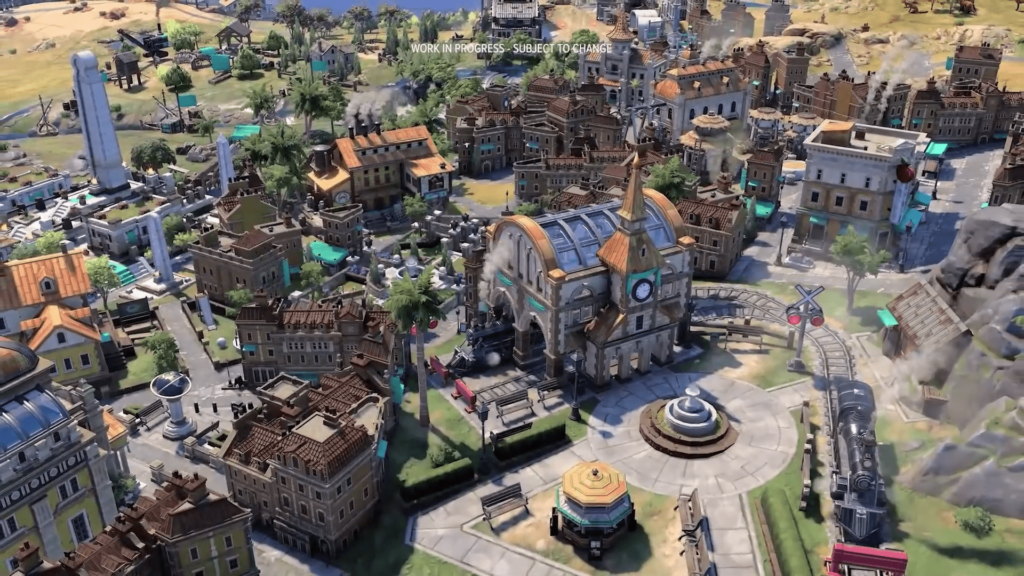Civilization VII: A breath of fresh air for the series

Civilization VII revolutionizes the series: Changing civilizations, three dynamic ages and a revised diplomacy system promise a breath of fresh air. A first look at the gameplay reveals how Firaxis is reinventing the strategy classic.
Sid Meier Fans of the Civilization series can look forward to a small revolution: Civilization VII is a new part that will shake up the series somewhat. In a recently published Gameplay Showcase Developer Firaxis presented the most important changes and gave a first insight into the gameplay. The game is scheduled to be released worldwide on February 11, 2025 for PS5, PS4, Xbox Series X|S, Xbox One, Nintendo Switch and PC via Steam and Epic Games Store.
Changing civilizations through the ages
One of the biggest innovations in Civilization VII is the ability to change civilizations during the game. The game is divided into three distinct eras: Ancient, Discovery, and Modern. At the start of each era, players can choose a new civilization, with the choice depending on previous achievements and developments. For example, you could start as Egypt, then switch to the Songhai, and finally end up as Germany.
This change is intended to bring more variety and strategic depth to the game. The chosen leader remains the same throughout the entire game and develops further through an attribute system. Civilization VII gameplay showcase reveals revolutionary innovations
Interestingly, players can now also freely combine leaders and civilizations. It would theoretically be possible to choose Hatshepsut as the leader of Rome or put Benjamin Franklin at the head of China. This opens up completely new possibilities for alternative histories.
Three distinct eras with crises
The division into three major ages also brings with it a new game structure. Each age ends with a crisis that affects all players simultaneously. In ancient times, for example, more barbarian camps appear towards the end, threatening civilizations. In addition, negative effects must be accepted, such as higher unit costs or reduced food production.
These crises are intended to make the game more dynamic and prevent a player from gaining an unassailable lead too early. At the same time, they clearly mark the transition between the ages and thus create a clearer structure in the course of the game. The change of ages is also intended to help players stay motivated to play their games through to the end, instead of giving up in the middle section of the game, as is often the case.
Revised diplomacy system
The diplomacy system in Civilization VII has been fundamentally revised. A new resource is “influence”, which is used for diplomatic actions. From the first greeting to war support – everything now costs influence. This currency is generated by certain buildings and actions and has a limit, which is intended to encourage players to engage in regular diplomatic interactions.
Smaller civilizations, formerly known as city-states, are now called “independent races” and are more dynamic. They can appear and disappear throughout the game, adding extra variety. Players can use influence to befriend these independent races or even recruit units from them.
New unit system with commanders
Another significant change concerns the unit system. Instead of moving individual units across the map, commanders are now introduced. They can group several units into an army and move them together.
Commanders have special skills and can be upgraded over the course of the game, which can influence tactical decisions on the battlefield. This change is also intended to help improve computer intelligence, as it will be easier for the AI player to effectively control larger army groups rather than coordinating many individual units.
Urban development without workers
In Civilization VII, there are no longer any workers or builders. Instead, cities now develop organically by connecting new districts to existing ones. There are two types of districts: urban and rural. Urban districts can accommodate multiple buildings, while rural districts are more like the previous terrain improvements.
This change is intended to reduce micromanagement and lead to more realistic city structures. The developers were inspired by the evolution of the city. real cities like London inspire which have changed drastically over the centuries.
New victory conditions and legacy paths
Civilization VII introduces a new system of legacy paths, divided into four categories: science, culture, military, and economics. Players can focus on one or more of these paths in each age to make progress. This progress not only contributes to victory, but also influences which civilizations are available for selection in the next age.
This system is designed to prevent players from knowing early in the game whether they will win or not. It allows for more flexible strategies and encourages players to change tactics even later in the game.
Graphic revision and atmosphere
Civilization VII presents itself in a new visual guise. The developers were inspired by miniature models, model railways and museum exhibitions to create a detailed and atmospheric game world.
The landscapes appear more natural and lively, while the units and buildings stand out with their slightly stylized look. The leaders have also been reworked and now show more personality and detail in their animations.
Conclusion and outlook
Civilization VII is taking a bigger step than its predecessors with its innovations. The ability to change civilizations, the clear division into eras and the revised diplomacy system promise a breath of fresh air for the series. At the same time, many tried and tested elements are retained, so fans of the series don’t have to completely change their ways. Until the release, it remains to be seen how the new mechanics work in practice and whether Firaxis will make any further fine-tuning.
The developers have already announced that further content in the form of DLCs will follow after the release, including the “Crossroads of the World Collection” and “Right to Rule”. What do you think of the changes in Civilization VII? Are you looking forward to the ability to change civilizations and freely combine leaders, or do you see this as too big a break with the series tradition?
Alexia is the author at Research Snipers covering all technology news including Google, Apple, Android, Xiaomi, Huawei, Samsung News, and More.










